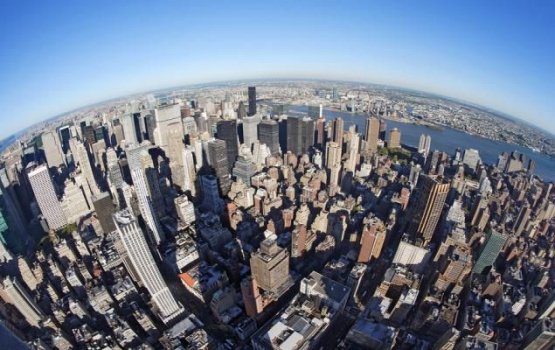18 Participating Banks Emerge Triumphant in Stress Test 2019

On Friday, the Federal Reserve released the
Dodd-Frank Act supervisory stress test 2019 (DFAST 2019) results,
which, to a great extent, reflect the stability of the banking
system. In fact, this reaffirms that U.S. banking giants are
adequately capitalized to survive under a tremendously difficult
economic scenario.
Due to some regulatory changes last year, 18 of the 35 banks were
part of DFAST 2019. All 18 banks, which submitted their capital
plans to the Fed, have passed the first round of test. Notably,
smaller banks, including BB&T Corporation BBT, SunTrust Banks
STI, and Citizens Financial Group CFG, were exempted from the
stress test this time.
“The results confirm that our financial system remains resilient,â€
Fed vice chairman Randal Quarles said in a statement. “The nation’s
largest banks are significantly stronger than before the crisis and
would be well-positioned to support the economy even after a severe
shock,†noted Quarles.
Nevertheless, the clearance of the stress test does not
automatically lead to the conclusion that the banks qualify for
additional capital deployment. The banks will have to wait till Jun
27 for approval of their capital plans.
Overall Results
This year’s stress test as compared with the last year reflected
“severely adverse†scenario featuring a steeper downturn in the
U.S. economy, with real GDP shrinking around 8% as compared to the
pre-recession peak. Moreover, the 10-year Treasury declined to a
trough of around 0.75%. Furthermore, in equities, the banks were
required by the Fed to factor in substantially more volatility,
with the U.S. Market Volatility Index (VIX) reaching 70%.
Under this hypothetical scenario, these banks will incur a loss of
$410 million, which improved from total losses of $464 billion
projected in the worst-case hypothetical scenario for the 18 firms
in 2018. Also, the Common Equity Tier 1 (CET1) capital ratio (in
aggregate) would fall to a low of 9.2% from an actual 12.3% in
fourth-quarter 2018. Notably, the figure is well above the 4.5%
minimum mark set by regulators.
This scenario also included a global recession with the U.S.
unemployment rate increasing 6-10%, along with slump in real estate
prices and heightened stress in corporate loan markets.
Notably, banks continuing with the annual stress test for nine
years, included JPMorgan Chase & Company JPM, Bank of America
Corporation BAC, Citigroup Inc. C and Wells Fargo and Company WFC.
These four banks are the largest U.S. banks by assets. Among these,
Citigroup and JPMorgan currently carry a Zacks Rank #2 (Buy) and
Zacks Rank #3 (Hold), respectively. You can see the
complete list of today’s Zacks #1 Rank (Strong Buy) stocks
here.
Further, as announced earlier, smaller and less complex banks
exempted from this year’s test are currently on a two-year cycle as
required by the Economic Growth, Regulatory Relief, and Consumer
Protection Act. Notably, the participating 18 banks hold around 70%
of all U.S. bank assets.
Root of the Stress Test
Currently authorized under the Dodd-Frank financial-services law,
the stress tests were introduced after the 2008 financial crisis.
During this economic downturn, big financial institutions like
Lehman Brothers collapsed and several other big banks were also on
the verge of a collapse. The situation compelled the U.S.
government to infuse billions of dollars into credit markets and
save the entire financial system from crashing. Stress tests have
been annually conducted since 2009.
Recovery on the Way
This is not the final round. The big banks will have to undergo the
Fed’s stress test once every year. This will help build up the weak
capital levels of banks, which are always a threat to the economy.
Also, this could ultimately translate to less involvement of the
taxpayers’ money for bailing out troubled financial
institutions.
Nevertheless, the central bank’s approval to increase dividend
payment and accelerate the share-buyback program will definitely
help banks attract more investments, in the days ahead. Thus, it
can be said that the economy is on the right track to sustained
recovery.
More Stock News: This Is Bigger than the iPhone!
It could become the mother of all technological revolutions. Apple
sold a mere 1 billion iPhones in 10 years but a new breakthrough is
expected to generate more than 27 billion devices in just 3 years,
creating a $1.7 trillion market.
Zacks has just released a Special Report that spotlights this
fast-emerging phenomenon and 6 tickers for taking advantage of it.
If you don't buy now, you may kick yourself in 2020.
Click here for the 6 trades >>
Want the latest recommendations from Zacks Investment Research?
Today, you can download 7 Best Stocks for the Next 30 Days.
Click to get this free
report
Citigroup Inc. (C) : Free
Stock Analysis Report
BB&T Corporation (BBT)
: Free Stock Analysis Report
SunTrust Banks, Inc. (STI)
: Free Stock Analysis Report
JPMorgan Chase & Co.
(JPM) : Free Stock Analysis Report
Wells Fargo & Company
(WFC) : Free Stock Analysis Report
Bank of America Corporation
(BAC) : Free Stock Analysis Report
Citizens Financial Group,
Inc. (CFG) : Free Stock Analysis Report
To read this article on
Zacks.com click here.
Zacks Investment Research